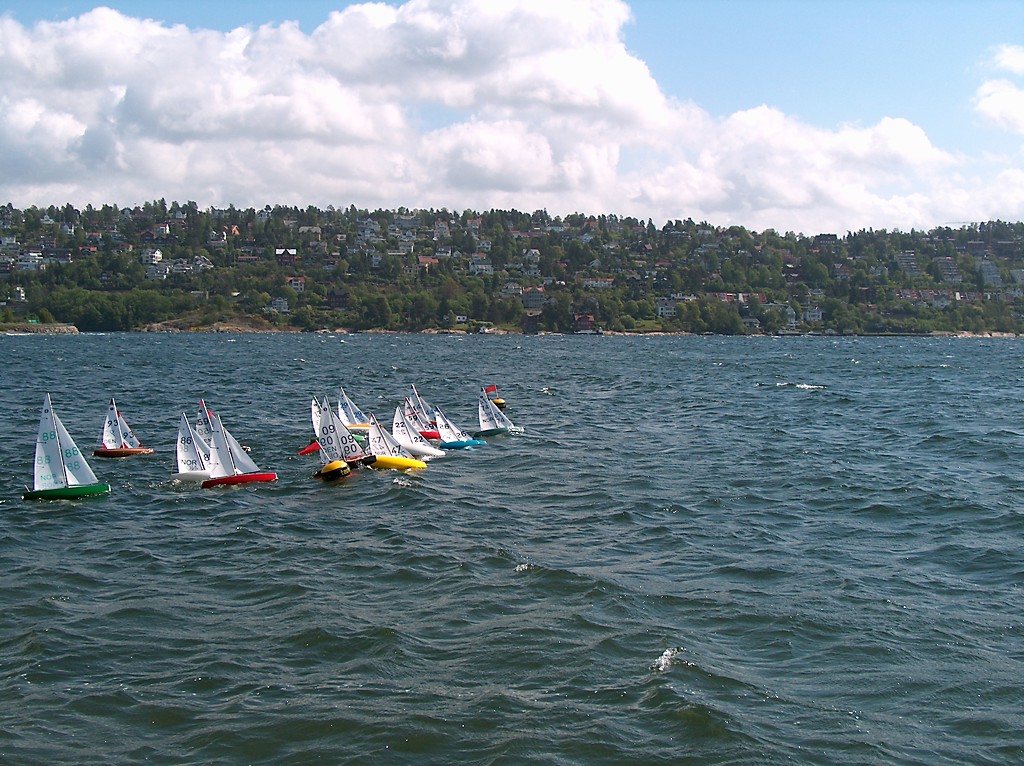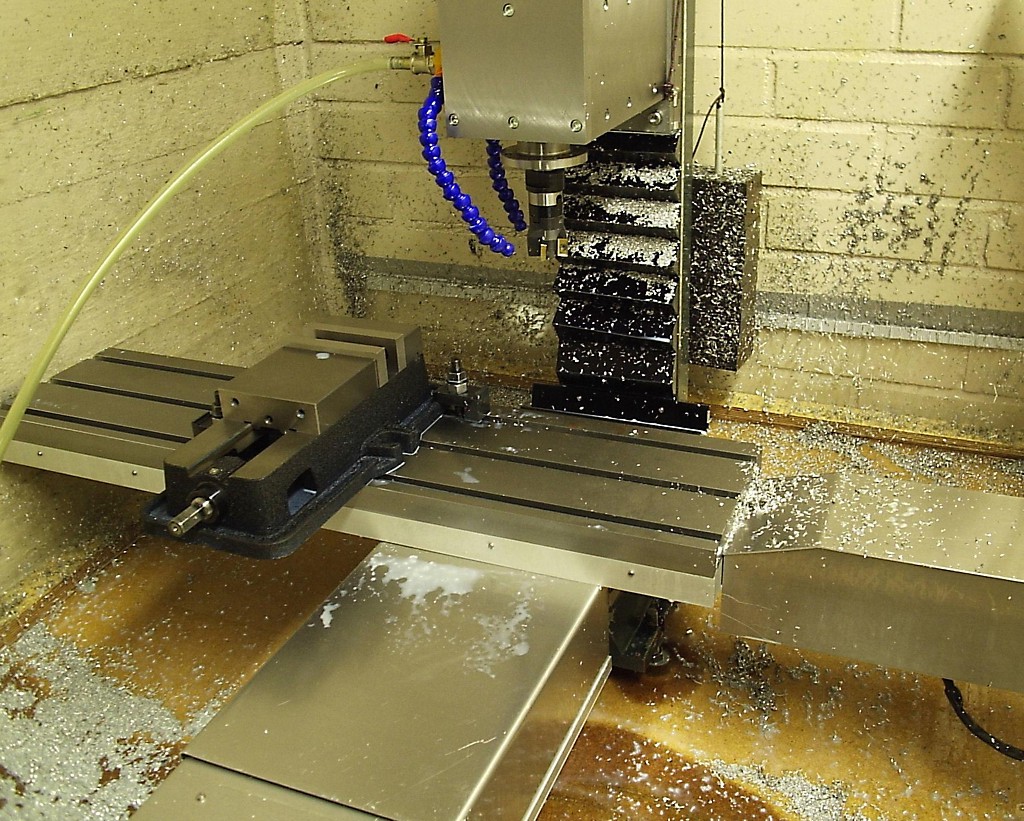Vital systems seem to have reintroduced the Motenc-Lite PCI 4-axis servo card, now at a cheaper price of $249
Google Reader
I've found a new way to keep up with the latest on the web: Hello Google Reader, bye bye Live Bookmarks!
WordPress 2.2 with Widgets
I've upgraded to the latest WordPress, which now includes drag and drop customization of the sidebar using widgets. A nice new addition to the default install is the 'Recent Comments' widget.
I had to switch to the new default theme that comes with 2.2, but after the usual mods the look of the site is back to normal.
I'm also experimenting with MiniPosts to create a side-blog, or Asides, for short comments/links.
In the future I'd like to include a tag-cloud and maybe some stats-listing in the sidebar.
Gooseneck prototype
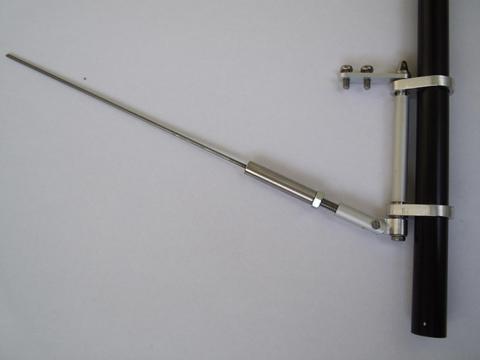
Jari has been developing the ball-raced gooseneck idea. For round booms (and maybe the Sails ETC booms too) there is now a typical 'tang' at the top. Using a rigid compression strut for the kicking strap seems to be questionable under the current rules, so here's a more conventional kicking strap based on a piece of stainless M4 thread, a threaded stainless cylindrical sleeve, and a piece of stainless wire with a 'blob' on the end which keeps it attached to the sleeve. There will be a thumb-wheel on the final version instead of the nut seen above, and probably also fixing-screws for attaching the fitting rigidly to the mast. Jari thinks these fittings could be sold for 60euros each (including all parts and the bearings).
'07 SC Race 1, Oslo, Norway
28 skippers from three Nordic countries came together at Malmoya/NMS (wikimapia.org rocks! I challenge all my readers to add at least one place!) for 8 races on Friday in no2 rig conditions and light rain and continued on Saturday for 6 more races in a strong wind with no3 rig.
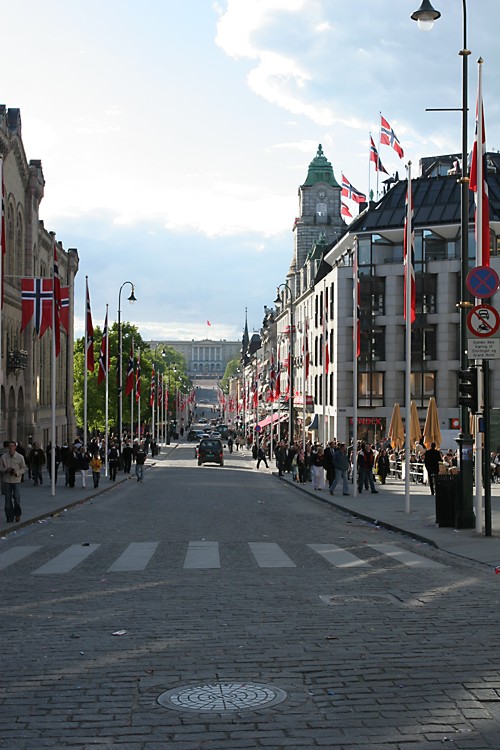
Arriving in Oslo on 17. May meant that the whole of Norway was celebrating the constitution day!

Dancing in the streets. Most people wore traditional Norwegian outfits.
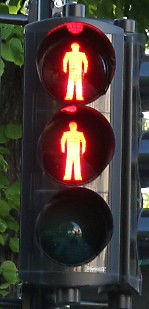
Traffic lights Norwegian style: If one red man is good for you then two must be about 100% better still!
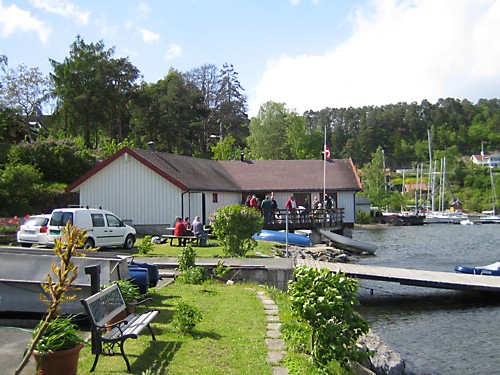
The race was hosted by Norsk Modellseilforening. Above their clubhouse on the Malmoya island just 10 minutes outside the centre of Oslo. The club was founded in 1904, and it shows in the historic yachts and photographs inside the club. Now they have about 30 members with weekly races gathering 10-15 boats I understand.
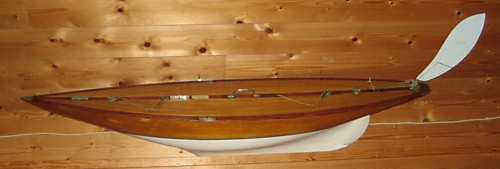
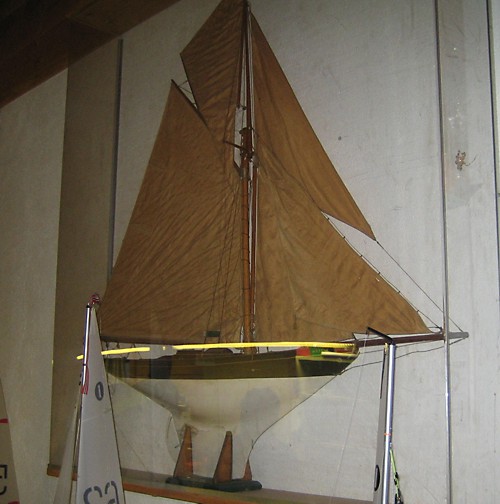
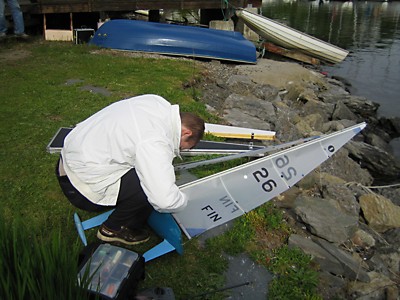
As my new Noux is not ready yet, I sailed FIN-26, the Italiko I had at the Vancouver Worlds (thanks to Lasse K for lending me his boat!). I was struggling to find balance on the beat with the no1 and no2 rigs on the first racing day, and a good start with placings of 3-5-4-4 dwindled into 7-7-7-8 (including my two throw-outs) by the end of the day as the mind tries to compensate for lack in boatspeed with increasingly radical tactical decisions...
Speed on the second day with the no3 rig was much better and I was able to keep up with the usual suspects that have dominated these races over the past years (that's Torvald K from Norway and Sören A from Denmark). I might be imagining things, but I felt that the Italiko was very easy to manoeuvre and keep still on the starting line, perhaps due to its large area keel. A solid start and a good first rounding is vital in radio-sailing, and as these two bits of the puzzle came together I managed 2-3-2-4-3-4 on the second day (just like the first day should have been!). Still there were a boat or two passing me on the long beat because the trim of the boat was not exactly right, but tactically I'm very satisfied with the 2nd day's racing.
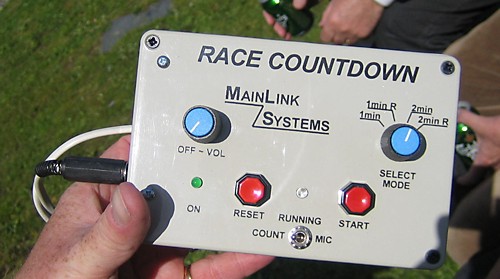
Race officer Ole-Peder Björsom used this countdown system by Main Link Systems together with a speaker (below). It worked very well and provided enough volume even in the no3-rig conditions.
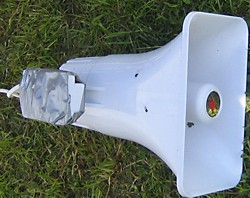
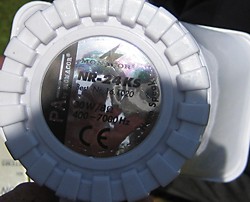
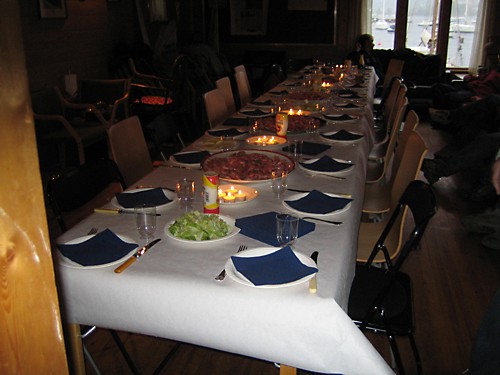
The first day of racing was concluded with a shrimp-based dinner for all participants in the clubhouse.

These two pictures were taken just after racing finished on the second day and show the steady 13-15 m/s winds with gusts higher still. A brave wind-surfer was seen resting for about 10min on the jetty before continuing his blast across the fjord.

Now it's clear why the Swedes weren't present: they're busy cnc-milling plugs and testing their latest design in the bath-tub!
The results and a race report are available at iom-nordic.org.
I don't have any sailing pictures, but I'd like to publish some here especially from the 2nd day. So if anyone has some good action photos let me know.
The remaining two races in this series are:
- Scandinavian IOM Cup Race 2, Turku, Finland, 1-2 September 2007
- Scandinavian IOM Cup Race 3, Sweden, 29-30 September 2007
Update 2007May23: Olle Martonen sent me two sailing pictures (click the pics for hi-res versions):
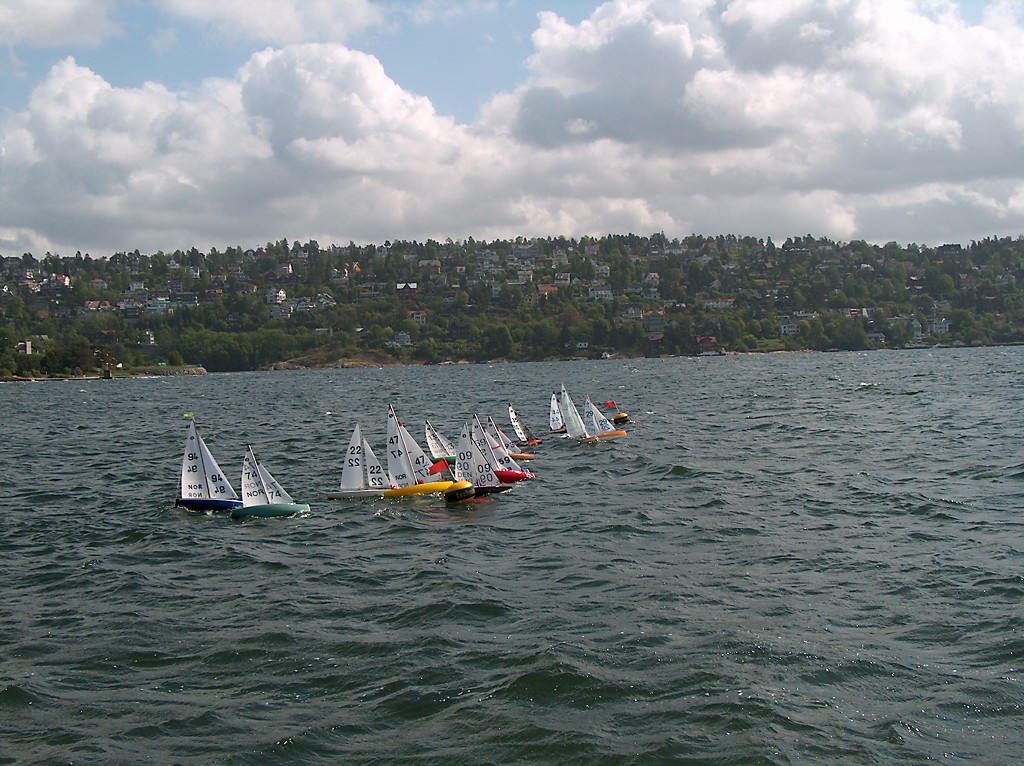
If you look real hard behind the bow/jib of NOR-59 you can see a bit of blue - that's me!
This is probably not the same start as the one above. Note however how the (consistent?) skippers prefer a similar position on the line. The yellow (47) and black (09) boats are close to the starboard flag, the red (59) and blue (26) are in the middle of the line.
'07 SC Race 1, Oslo, Norway
28 skippers from three Nordic countries came together at Malmoya/NMS (wikimapia.org rocks! I challenge all my readers to add at least one place!) for 8 races on Friday in no2 rig conditions and light rain and continued on Saturday for 6 more races in a strong wind with no3 rig.

Arriving in Oslo on 17. May meant that the whole of Norway was celebrating the constitution day!

Dancing in the streets. Most people wore traditional Norwegian outfits.

Traffic lights Norwegian style: If one red man is good for you then two must be about 100% better still!

The race was hosted by Norsk Modellseilforening. Above their clubhouse on the Malmoya island just 10 minutes outside the centre of Oslo. The club was founded in 1904, and it shows in the historic yachts and photographs inside the club. Now they have about 30 members with weekly races gathering 10-15 boats I understand.



As my new Noux is not ready yet, I sailed FIN-26, the Italiko I had at the Vancouver Worlds (thanks to Lasse K for lending me his boat!). I was struggling to find balance on the beat with the no1 and no2 rigs on the first racing day, and a good start with placings of 3-5-4-4 dwindled into 7-7-7-8 (including my two throw-outs) by the end of the day as the mind tries to compensate for lack in boatspeed with increasingly radical tactical decisions...
Speed on the second day with the no3 rig was much better and I was able to keep up with the usual suspects that have dominated these races over the past years (that's Torvald K from Norway and Sören A from Denmark). I might be imagining things, but I felt that the Italiko was very easy to manoeuvre and keep still on the starting line, perhaps due to its large area keel. A solid start and a good first rounding is vital in radio-sailing, and as these two bits of the puzzle came together I managed 2-3-2-4-3-4 on the second day (just like the first day should have been!). Still there were a boat or two passing me on the long beat because the trim of the boat was not exactly right, but tactically I'm very satisfied with the 2nd day's racing.

Race officer Ole-Peder Björsom used this countdown system by Main Link Systems together with a speaker (below). It worked very well and provided enough volume even in the no3-rig conditions.



The first day of racing was concluded with a shrimp-based dinner for all participants in the clubhouse.

These two pictures were taken just after racing finished on the second day and show the steady 13-15 m/s winds with gusts higher still. A brave wind-surfer was seen resting for about 10min on the jetty before continuing his blast across the fjord.

Now it's clear why the Swedes weren't present: they're busy cnc-milling plugs and testing their latest design in the bath-tub!
The results and a race report are available at iom-nordic.org.
I don't have any sailing pictures, but I'd like to publish some here especially from the 2nd day. So if anyone has some good action photos let me know.
The remaining two races in this series are:
- Scandinavian IOM Cup Race 2, Turku, Finland, 1-2 September 2007
- Scandinavian IOM Cup Race 3, Sweden, 29-30 September 2007
Update 2007May23: Olle Martonen sent me two sailing pictures (click the pics for hi-res versions):

If you look real hard behind the bow/jib of NOR-59 you can see a bit of blue - that's me!
This is probably not the same start as the one above. Note however how the (consistent?) skippers prefer a similar position on the line. The yellow (47) and black (09) boats are close to the starboard flag, the red (59) and blue (26) are in the middle of the line.
CNC milled rudder mould
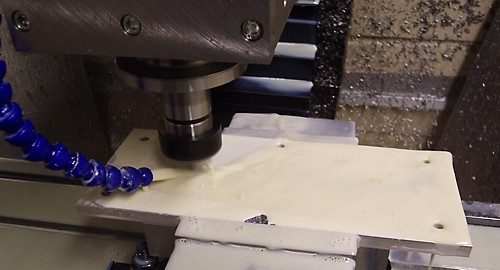
As a test-case for our upgraded mill we made this aluminium rudder mould. Surface finish is now significantly better than previously, and this mould will only require light sanding to reach a polished finish. We're still using the stepper motors. Things should further improve a bit with the servos since it will then be possible to run the finish pass with a ball-nose endmill and a very small stepover to reach a nice surface finish.
In the next few weeks when the servos are in use it will be possible to produce fin, rudder, and keel-bulb moulds pretty easily. Moulds for the Noux design will be offered for sale(email me if you are interested!), and if anyone has his or her own design for a fin/rudder/bulb we can very probably produce a mould for that too (limited by the work envelope of the mill, ca 500/200/200 mm X/Y/Z).
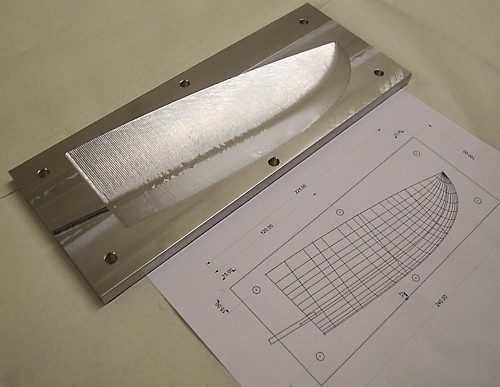
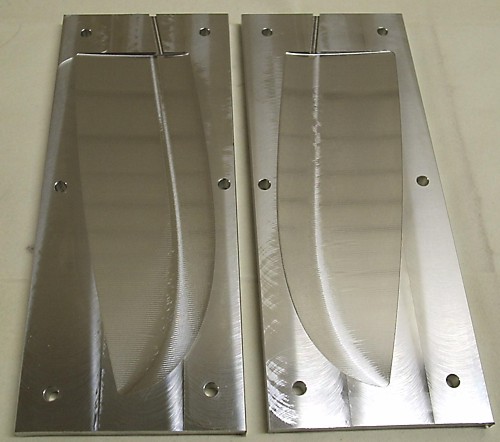
First parts with ballscrews/rails
Here are some of the first parts made with our new upgraded mill which now runs with ballscrews and linear rails. Top speeds as well as accelerations are up on all axes, and there's very little risk of losing steps any more. Hope to have the servo electronics ready sometime in May...
Jari also made some useful chip/coolant guards for both the motors and the ballscrews/rails. As you can see these are mandatory when 'making chips' with a 3000rpm spindle and lots of coolant!
The new table is so long it hits the wall - We need to move the machine to a new stand and redo the enclosure.
AOD Steering
I've worked on steering our Optical Tweezers instrument using Acousto Optical Deflectors. Here's an example of what it can do. We're trapping four 1 um silica microspheres in water using a single 1064nm laser that is time shared between the beads (it hops between them at a fast rate). Then we can program the AODs to steer the beads around in whatever patterns we want.
Servo electronics progress
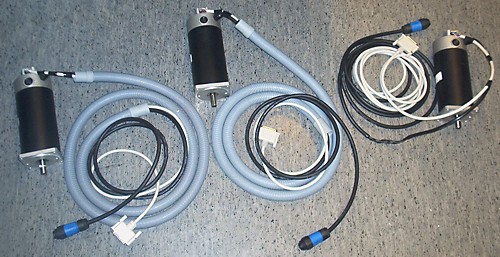
Now that the mechanical side of our Opti-BF20 upgrade is almost complete I'm trying to get all the bits and pieces together for the electronics upgrade too. Here I've made cables for the servos. Three 1.5mm^2 conductors (+, -, and protective earth) in the black wire carry power to the motor, and I use a 25-pin (10 of which are used) parallel printer-port cable (white) for the differential encoder. Since we're going to be using flood coolant I've used plastic tubes (grey) around the X and Y motor cables to keep them dry.

This is the 'breakout-box' for the m5i20. On the left the jogwheel card is on the bottom with two general purpose IO optoisolator cards on top. To the right the motion-control optoisolator on the botton and the differential encoder interface on top. The next job is to wire everything inside the box and start testing how all signals come through to HAL. I'll put together a pyVCP panel for testing everything.
